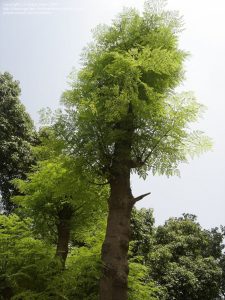Moringa: not just a tree
Faben Getachew
 Moringa tree, (also known at least by a dozen more other names such as horseradish tree, benzolive tree, and drumstick tree) is native to India, Bangladesh, Pakistan and Afghanistan. It’s no ordinary tree but one that is believed to have a great potential in food security, sustainable land care and improved nutritional status. Nutritionists say it is one of the most fast growing, powerful health-enhancing plants, natural energy booster and a powerhouse of nutrients.
Moringa tree, (also known at least by a dozen more other names such as horseradish tree, benzolive tree, and drumstick tree) is native to India, Bangladesh, Pakistan and Afghanistan. It’s no ordinary tree but one that is believed to have a great potential in food security, sustainable land care and improved nutritional status. Nutritionists say it is one of the most fast growing, powerful health-enhancing plants, natural energy booster and a powerhouse of nutrients.
The tree has many varieties, Moringa oleifera being the most widely cultivated species around the world. The variety Moringa stenopetala or as it is known in Ethiopia, Shifera, is very common in the Arba Minch and Turmi area in southern Ethiopia. The stem, seeds and leaves of the tree can be used to provide good nutritional value. The seeds can be boiled or roasted; the roots can be used to prepare a sauce. However, the leaves are the most nutritious part and are eaten raw or boiled and contain a good quantity of vitamins, minerals, protein and amino acids.
Moringa oleifera contains more vitamins than most fruits. In fact the leaves provide four times the calcium of milk, seven times the vitamin C of oranges, four times the vitamin A of carrots, three times the potassium of bananas and three times the calcium in milk. It also has the highest content of protein when compared to other plants, containing 18 of the 20 amino acids required by the human body and including all of the eight essential amino acids. The protein quality in Moringa is comparable to that of soy. Food scientists believe that it is even better than soy protein as it is non-allergic. Ben oil is the oil derived from Moringa seeds, and is considered to have remarkable attributes when compared to olive oil. One can use it in cooking, cosmetics and as lubricant for machinery. The seed cake which is left after the oil has been extracted can also be used as feed to increase milk production in cows.
Medicinal qualities
More than 90 nutrients in Moringa leaves are believed to help in curing around 300 different human diseases. Juices obtained from these leaves are believed to have a stabilizing effect on blood pressure for example. The leaves are also used to treat anxiety, skin infections, fever, and bronchitis. In addition when used together with honey and coconut milk it can be a remedy for diarrhea.
Aids to combat malnutrition
Moringa has been used in combating malnutrition and food insecurity in many countries. Leaves from this tree can be eaten fresh, cooked, or can be stored as dried powder for a long period of time without refrigeration. They can be an outstanding source of essential nutrients in the tropics especially at the end of the dry season when food is scarce or when foods are seasonally unavailable.
Furthermore, the flour of Moringa tree seeds is excellent for the detoxification and purification of water.
The best way to benefit from this plant is to eat Moringa in the raw form. In studies conducted so far Moringa leaves have not been found to be toxic and are therefore safe for consumption. But of course a very extensive health and safety studies should be conducted to establish the therapeutic qualities of Moringa on humans as most of the studies have been conducted on animals.
Faben Getachew holds an MSc in Food and Nutrition and is host of a 60 minute nutrition radio show on Afro FM 105.3






